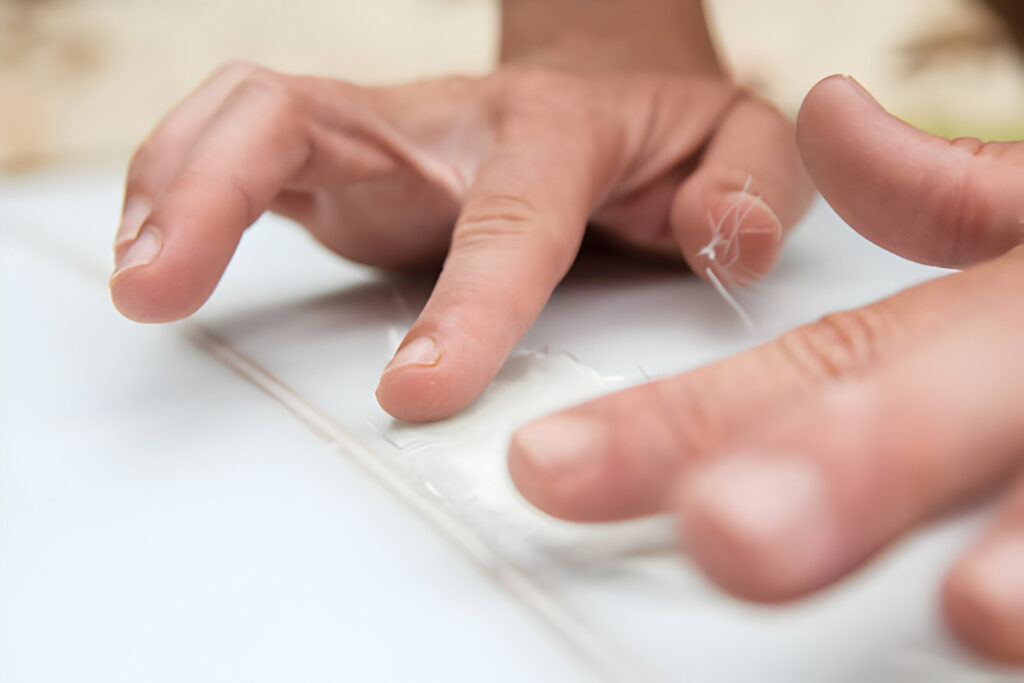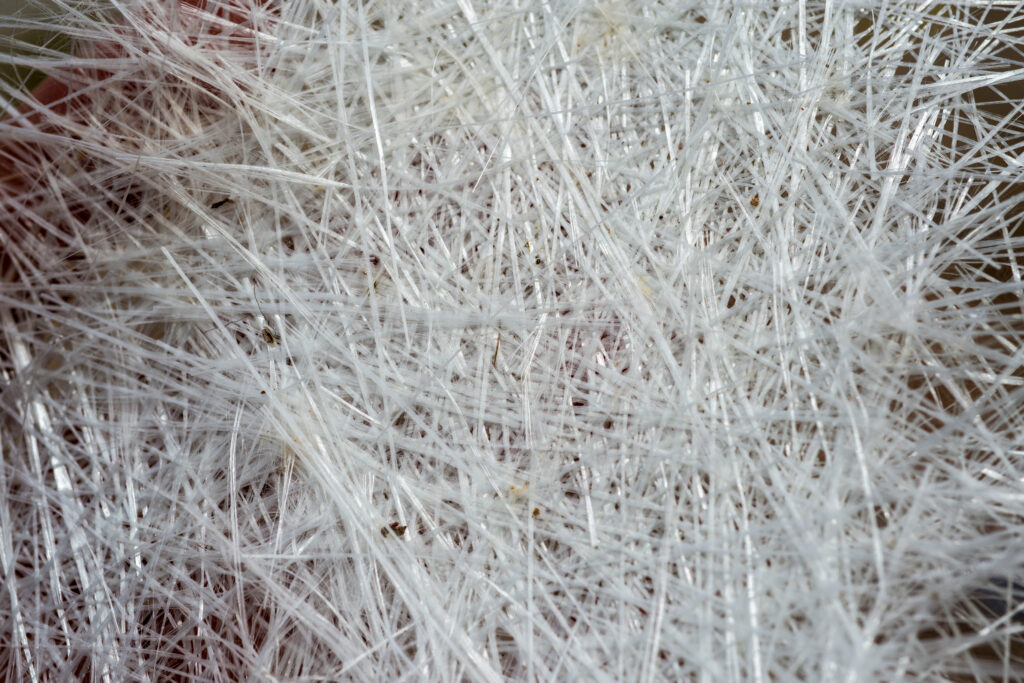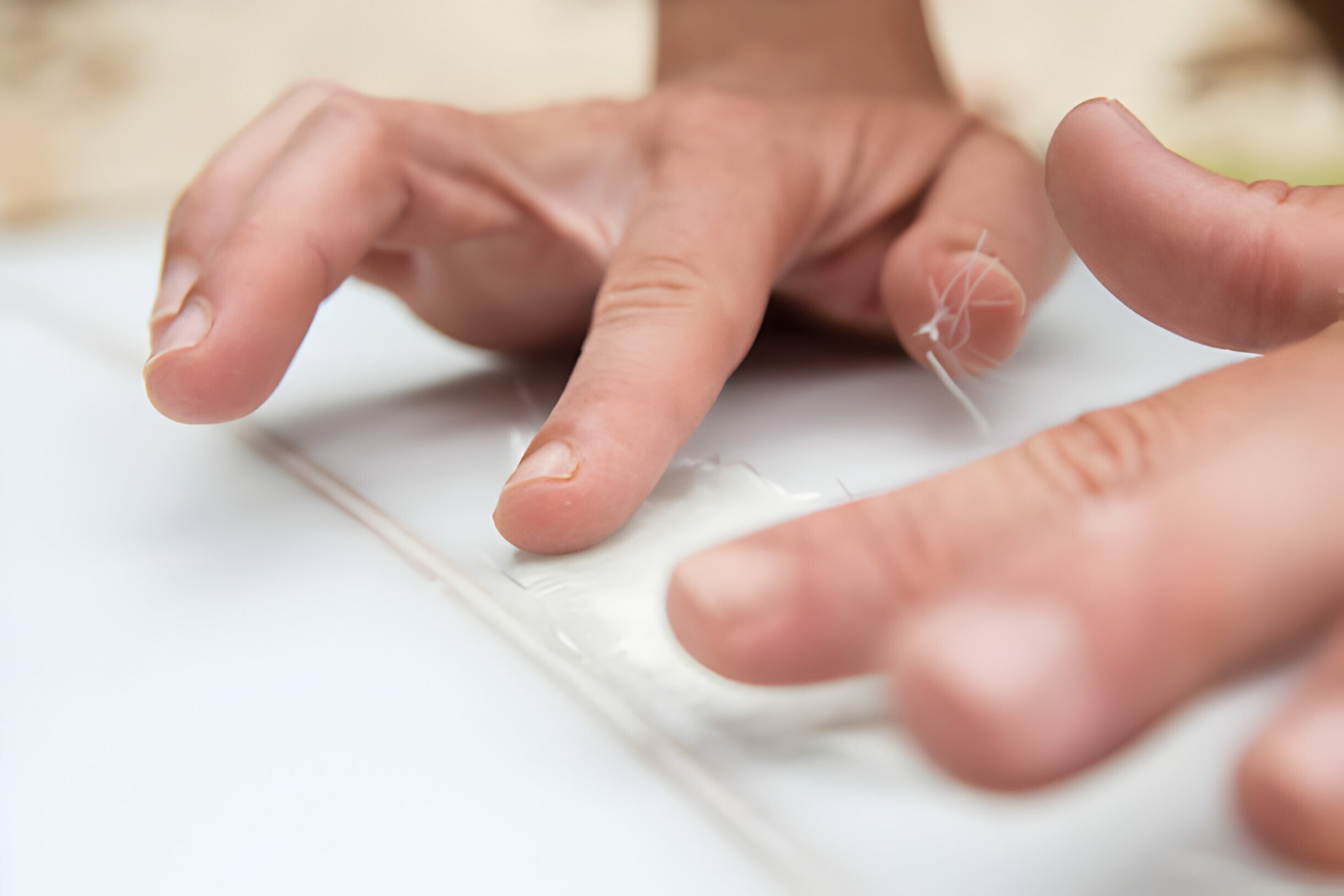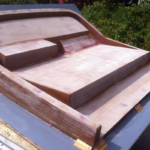Fiberglass is a type of glass-reinforced plastic that is commonly used in construction, automotive, and marine industries. It is a lightweight and durable material, but it can be hazardous if not handled properly.
Getting fiberglass in your finger can be painful and irritating, and it requires immediate attention to prevent further complications.

The first step in removing fiberglass from your finger is to wash the affected area with soap and water. This will help to remove any loose fibers and debris from the wound.
After washing, it is important to sterilize the area with rubbing alcohol or hydrogen peroxide to prevent infection. If the wound is deep or bleeding, seek medical attention immediately.
If the fiberglass is still embedded in the skin, there are several methods that can be used to remove it. One method is to use a piece of duct tape or adhesive tape to gently pull the fibers out.
Another method is to soak the affected area in warm water for 20-30 minutes to soften the skin, and then use a sterilized needle or tweezers to carefully remove the fibers. It is important to be gentle and avoid pushing the fibers deeper into the skin.

Understanding Fiberglass
Fiberglass is a type of reinforced plastic that is made up of tiny glass fibers. It is commonly used in various applications such as insulation, boats, cars, and even furniture. Fiberglass is lightweight, strong, and durable, making it a popular choice for many industries.
However, handling fiberglass can be dangerous, as the tiny glass fibers can easily get into the skin and cause irritation. When fiberglass gets into the skin, it can cause itching, redness, and even small cuts. It is important to take precautions when working with fiberglass to avoid getting it into the skin.
Here are some tips to help you understand fiberglass better:
- Fiberglass is made up of tiny glass fibers that can easily get into the skin.
- The fibers can cause irritation, itching, redness, and even small cuts.
- It is important to wear protective clothing, such as gloves and long-sleeved shirts, when working with fiberglass.
- If fiberglass gets into the skin, it can be removed by gently washing the affected area with soap and water.
- It is important to seek medical attention if the irritation persists or if the fiberglass has caused a deep cut.
By understanding the properties of fiberglass and taking the necessary precautions, you can work safely with this material and avoid any potential health hazards.
Common Causes of Fiberglass in Fingers
Fiberglass is a common material used in various industries, including construction, automotive, and manufacturing. It is made up of tiny glass fibers that can easily break off and embed themselves in the skin.
When fiberglass gets into the skin, it can cause irritation, itching, and pain. Here are some common causes of fiberglass in fingers:
- Handling fiberglass insulation: Fiberglass insulation is used to insulate homes, buildings, and pipes. It is made up of small glass fibers that can easily break off and stick to the skin.
- Working with fiberglass materials: Fiberglass is used to make various products such as boats, car parts, and surfboards. When working with these materials, it is easy for the small glass fibers to break off and get into the skin.
- Using fiberglass-reinforced products: Fiberglass-reinforced products, such as plastics and composites, are used in many industries. When these products are cut or drilled, tiny glass fibers can become airborne and settle on the skin.
It is important to take precautions when working with fiberglass to prevent it from getting into the skin. Wearing protective clothing, such as gloves and long sleeves, can help reduce the risk of fiberglass exposure.
Additionally, washing the skin thoroughly with soap and water after working with fiberglass can help remove any fibers that may have stuck to the skin.
Symptoms of Fiberglass in Fingers
When fiberglass gets embedded in your fingers, it can cause a range of symptoms. These symptoms can vary in severity depending on the amount of fiberglass that has entered your skin and how deeply it has penetrated.
One of the most common symptoms of fiberglass in fingers is itching. The tiny fibers can cause irritation and itching sensations that can be quite uncomfortable. You may also experience redness and swelling around the affected area.
In some cases, fiberglass can cause a rash to develop on the skin. This rash can be itchy and may spread to other parts of the body if left untreated. If you notice a rash developing, it is important to seek medical attention right away.
Another symptom of fiberglass in fingers is pain. The tiny fibers can cause pain and discomfort, especially if they have penetrated deeply into the skin. In severe cases, fiberglass can cause nerve damage and chronic pain.
If you suspect that you have fiberglass in your fingers, it is important to seek medical attention right away. Your doctor can help you determine the severity of your symptoms and provide the appropriate treatment to alleviate your discomfort.

Immediate Actions to Take
When fiberglass gets into the skin, it can cause irritation, itching, and even pain. It is essential to take immediate action to prevent further damage. Here are some steps to follow when fiberglass gets into the skin:
- Wash the affected area immediately with soap and water. This will help to remove any loose fibers that may still be on the skin.
- Use tape to remove any remaining fibers. Apply tape to the affected area and then gently pull it off. This will help to remove any remaining fibers that are still on the skin.
- Apply a cold compress to the affected area. This will help to reduce swelling and pain.
- Avoid scratching or rubbing the affected area. This can cause the fiberglass to become embedded deeper into the skin, making it harder to remove.
- If the fiberglass is still embedded in the skin after trying these steps, seek medical attention. A healthcare professional may be able to remove the fiberglass using a needle or tweezers.
Remember, prevention is always better than cure. When working with fiberglass, wear protective clothing and gloves to prevent it from getting into the skin.
Methods to Remove Fiberglass
Fiberglass is a common material used in insulation, boats, and various other applications. However, it can be a real pain when it gets stuck in your skin. Here are some methods to remove fiberglass from your finger:
1. Tape Method
The tape method involves using adhesive tape to remove the fiberglass from your skin. Simply place a piece of tape over the affected area and press down firmly. Then, quickly remove the tape in the opposite direction of the fiberglass. Repeat this process until the fiberglass is completely removed.
2. Baking Soda and Water
Mixing baking soda and water to create a paste can be an effective way to remove fiberglass from your skin. Apply the paste to the affected area and let it sit for a few minutes. Then, rinse the area with warm water and pat dry.
3. Epsom Salt Soak
Soaking the affected area in a mixture of warm water and Epsom salt can help to draw out the fiberglass. Add a cup of Epsom salt to a bowl of warm water and soak your finger for 15-20 minutes. Rinse the area with warm water and pat dry.
4. Needle and Tweezers
If the fiberglass is deeply embedded in your skin, you may need to use a needle and tweezers to remove it. Sterilize the needle and tweezers with rubbing alcohol and carefully dig out the fiberglass. Be sure to clean the area with rubbing alcohol after removing the fiberglass.
Remember to always wear protective gloves and clothing when working with fiberglass to avoid getting it stuck in your skin in the first place. If the fiberglass is causing severe pain or swelling, seek medical attention immediately.
Using Tweezers
When it comes to removing fiberglass from the skin, tweezers can be a helpful tool. Here are some steps to follow:
- Start by washing the affected area with soap and water. This will help prevent infection and remove any loose fibers.
- Sterilize the tweezers by wiping them with rubbing alcohol or boiling them in water for a few minutes.
- Gently grasp the end of the fiberglass with the tweezers and pull it out in the same direction it entered the skin. Avoid squeezing or pinching the skin, as this can push the fibers deeper.
- If the fiberglass is too small or difficult to see, try shining a flashlight on the skin to illuminate the area.
- After removing the fiberglass, wash the area again with soap and water and apply a bandage if needed.
It’s important to note that if the fiberglass is deeply embedded or causing severe pain, it may be best to seek medical attention. In some cases, a healthcare provider may need to use a needle or scalpel to remove the fibers safely.
Using Tape
One effective way to remove fiberglass from a finger is by using tape. This method is simple and requires only a few materials.
To begin, gather a piece of tape, preferably duct tape or packing tape, and wrap it around your finger with the sticky side facing outwards. Press the tape firmly against your skin, making sure to cover the entire affected area.
Next, slowly peel the tape off your finger. The fiberglass particles should stick to the tape and be removed from your skin. If there are still fiberglass particles remaining, repeat the process with a fresh piece of tape until all particles have been removed.
It is important to note that this method may not work for larger or deeper fiberglass splinters. In those cases, it is best to seek medical attention.
Overall, using tape is a simple and effective way to remove fiberglass from a finger. It is important to be cautious and patient when using this method to ensure that all particles are removed without causing further irritation or injury.
Using Epsom Salt
Epsom salt is a popular remedy for removing fiberglass from fingers. It is a natural mineral compound that contains magnesium and sulfate, and it has been used for centuries to treat various ailments.
To use Epsom salt to remove fiberglass from your finger, follow these steps:
- Fill a bowl with warm water and add a tablespoon of Epsom salt.
- Soak your affected finger in the solution for 15-20 minutes.
- Gently rub the affected area with a soft-bristled brush or a washcloth to help remove the fiberglass.
- Rinse your finger with clean water and pat it dry with a clean towel.
It is important to note that Epsom salt may not work for everyone, and it may take several treatments to completely remove the fiberglass. If your symptoms persist or worsen, seek medical attention.
Overall, Epsom salt can be a useful and affordable solution for removing fiberglass from fingers. However, it is always important to take proper precautions to avoid getting fiberglass in the first place, such as wearing protective clothing and gloves when working with fiberglass materials.

Professional Medical Help
If the fiberglass splinter is deeply embedded or if the area is showing signs of infection, it is best to seek professional medical help. A doctor or nurse can properly remove the fiberglass and provide appropriate treatment for any resulting infection.
During the medical visit, the healthcare provider may use a variety of tools to remove the fiberglass, such as tweezers or a needle. They may also prescribe antibiotics or other medications to treat any infection that may have occurred.
It is important to follow the healthcare provider’s instructions for aftercare, which may include keeping the wound clean and dry, changing bandages regularly, and taking any prescribed medications as directed.
Remember, seeking professional medical help is always a good option if you are unsure about how to properly remove a fiberglass splinter or if the area is showing signs of infection.
Prevention Tips
To avoid getting fiberglass in your fingers, there are several precautions you can take. Here are some prevention tips:
- Wear protective gloves: When working with fiberglass, always wear protective gloves to prevent the fibers from getting embedded in your skin. Choose gloves that fit well and are made of a material that can resist fiberglass.
- Cover your skin: Wear long-sleeved shirts, long pants, and closed-toe shoes to cover your skin. This will help prevent fiberglass from getting on your skin and causing irritation.
- Use protective equipment: Wear safety goggles or a face shield to protect your eyes from fiberglass dust and particles. Also, use a respirator mask to prevent inhaling fiberglass particles.
- Keep the area clean: Fiberglass particles can easily spread and contaminate other surfaces. Keep the work area clean and free from debris to prevent the particles from getting on your skin.
- Be cautious when handling fiberglass: Handle fiberglass materials with care to avoid breaking or damaging them. Broken fiberglass can release more particles into the air and increase the risk of exposure.
By following these prevention tips, you can reduce your risk of getting fiberglass in your fingers and prevent irritation and discomfort.
Conclusion
Removing fiberglass from the skin can be a painful and frustrating experience. However, with the right tools and techniques, it can be done safely and effectively.
First and foremost, it is important to protect yourself from further exposure by wearing gloves and long sleeves when working with fiberglass. If you do get fiberglass in your skin, the first step is to remove any visible fibers using a pair of tweezers or tape.
Next, you can try using a paste made from baking soda and water to help draw out any remaining fibers. Alternatively, you can soak the affected area in warm water with a mild soap to help loosen the fibers.
It is important to avoid using harsh chemicals or abrasive materials, as these can further irritate the skin and make the problem worse.
If you are unable to remove the fiberglass on your own or if you experience severe symptoms such as swelling, redness, or infection, it is recommended that you seek medical attention.
By following these tips and taking the necessary precautions, you can safely and effectively remove fiberglass from your skin and avoid further discomfort.







